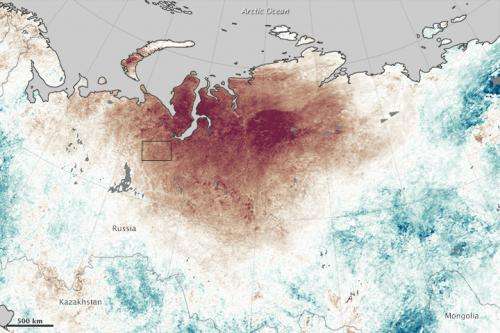Heat intensifies Siberian wildfires

The summer of 2012 was the most severe wildfire season Russia had faced in a decade. 2013 might be headed in the same direction after an unusual heat wave brought a surge of fire activity in northern Siberia in July.
A persistent high-pressure weather pattern in the Russian Arctic—a blocking high—contributed to the heat wave, which saw temperatures reach 32° Celsius (90° Fahrenheit) in the northern city of Norilsk. For comparison, daily July highs in Norilsk average 16° Celsius (61° Fahrenheit). Blocking highs are so named because they block the jet stream from moving rain-bearing weather systems along their normal west-to-east path; this leads to "stuck" weather patterns with long periods of stable air and exceptional heat.
The map above shows land surface temperature anomalies for July 20
Provided by NASA's Goddard Space Flight Center

















